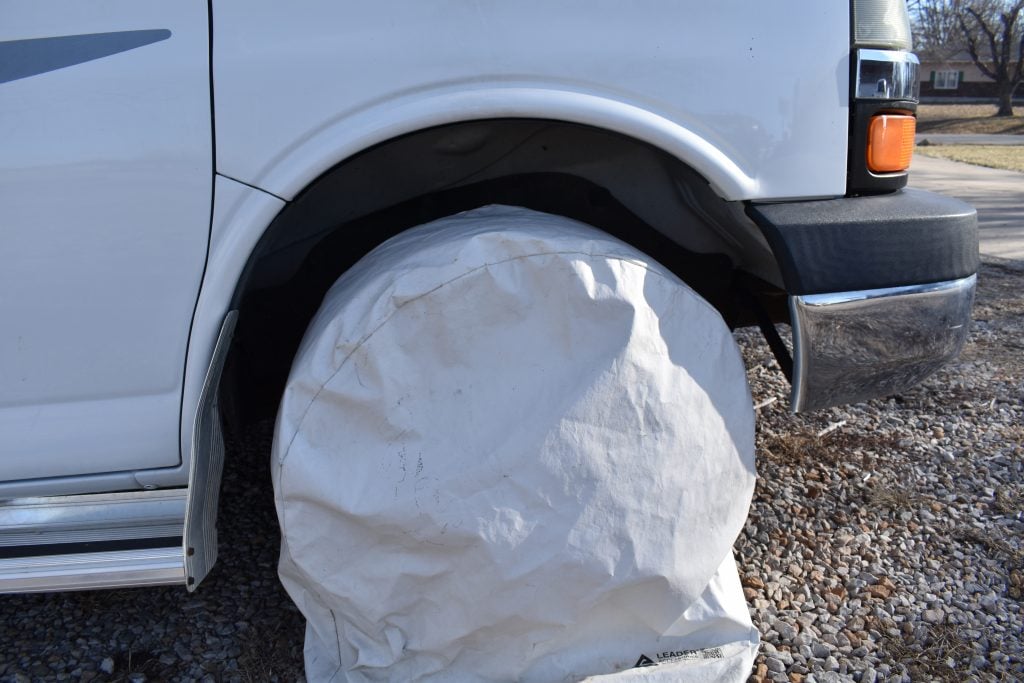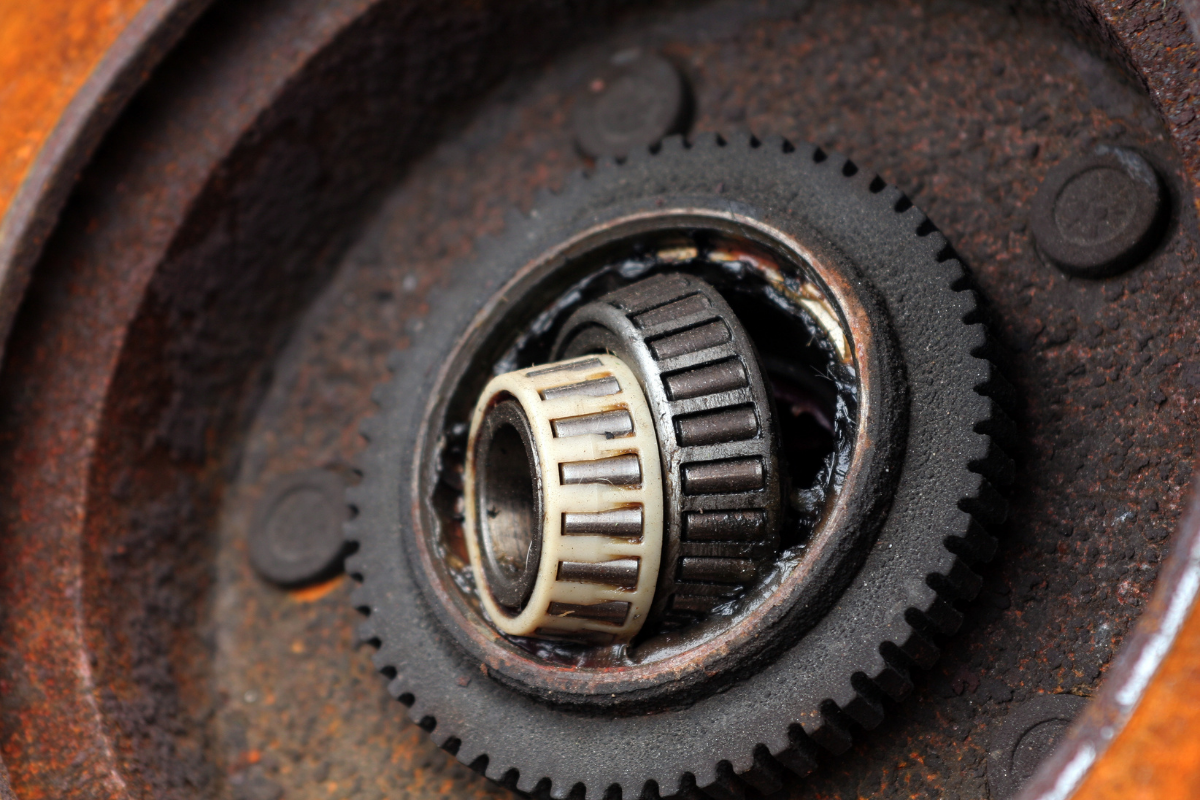
RV Repairs are a costly part of RV ownership
But, regular preventative maintenance can help reduce the chances of these expensive repairs from happening. It’s far easier to prevent a problem than to repair it. Stay ahead of the repairs and stay on the road with our tips every RVer needs to know.
Biggest 10 Preventative Maintenance Tips for Any RV
1. Inspect roof coatings
RV roofs are open to direct sunlight for most of the year and in some locations snow cover them for part of the year. A roof leak can cause major damage to your RV if preventive maintenance isn’t done.
RVs have a few different roof coating options depending on the manufacturer. Whichever kind you have, it is important to check it yearly for damage or deterioration from drying out.
When possible, keep your RV out of direct sunlight. Roof-mounted items will have sealant used around openings and mounting hardware. Check and replace this sealant if it looks to be dried out or missing.
2. Check window and door seals
Water leaks in an RV are one of the worst things that can happen. Leaks in walls and ceilings can go unnoticed until the damage has already been done. This can lead to structural damage to wooden materials used throughout your RV and of course, mold.
Before the season and before storage, do a thorough inspection of all window and door seals looking for dried out seals. Use a small screwdriver or something solid to check the area around these openings on the inside of the RV for soft spots.
Check for bubbles in the paint or discoloration. When in use, check for drafts around the doors and windows which would indicate poor sealing.
3. Perform RV water heater service
Hot water: we don’t necessarily need it but we all want it. Your RV’s water heater is a basic system that provides great convenience. Water heaters require maintenance at least once yearly to continue to run trouble-free.
Drain and flush at least once annually. Flushing with a flush wand is the best way to fully clean the tank. While the tank is empty, this is also the time to check the condition of the anode rod if equipped. Signs of rust or tank coating during the flushing are signs of a tank that may fail.
4. Service your wheel bearings
Wheel bearings are another item that goes unnoticed due to them being hidden. RV wheel bearings must withstand heat and constant movement while underway. Preventative maintenance is much easier and faster than the replacement of a bearing, which for many people will require paying a service center to do.
Before heading out for the season, check wheel bearings to ensure they don’t need to be replaced. When needed, pack the bearings with proper bearing grease. Wheel bearing grease breaks down over time so it is important to not only make sure you have grease but that it is still performing its job.

Wheel bearing inspection
5. Continuously check your tires
RV tires require the most preventative maintenance of any item on this list. On travel days, it is a minimum once-a-day check that should be done. The cost of replacing a single tire may not be great but the added cost of damage to the underneath and side of your RV as the result of a blowout can add up quickly.
Proper tire pressure is key, so make sure you carry a portable tire inflater. On travel days, tire pressure must be checked at least at the start of the day and ideally periodically thereafter.
Keep tires covered and out of the sun when possible and consider using a UV tire treatment to help keep the rubber compound from breaking down. Always drive within the recommended speed and load rating of your tires.
6. Be aware of humidity
Another silent killer, humidity is a problem with RVs that if not caught can cause major problems. Some of the best camping locations are hot, humid locations.
Proper airflow in your RV is important to minimize humidity build-up. Open doors and windows to improve the airflow when possible.
Utilize your roof vents and fans as well. Consider an upgrade to your roof vent for better two-way airflow. If you are in a more humid area, having an RV dehumidifier is a smart way to prevent problems.
7. Provide sun protection
We all love the sun but it can be harmful if you’re not careful. The same goes for your RV. Direct sunlight can fade paint, dry out fiberglass, and crack decals.
Many RVs have fancy paint and graphic designs. Keeping your exterior surfaces looking new can be labor intensive but the results are worth it and it will help keep up the resale value of your RV.
Yearly waxing your RV will help protect the paint and graphics. Waxing also helps to keep bugs and road grime from adhering to your RV, making it easier to wash between trips. When not in use, consider a cover for your RV and parking in shaded areas when possible.
8. Winterize your RV
It sucks to pack up your RV and store it for the winter but it is a very important time to perform some preventative maintenance that can save you repairs when the camping season comes.
Have a checklist. It can be tempting to park your RV and walk away dreaming of the next camping season. There are many little things to do while winterizing your RV so having a checklist will ensure nothing gets missed.
9. Maintain your RV furnace
We never think of the furnace ’til we need it. Furnaces often go unused for most of the season. In some cases, not using something can actually be harmful as well. Furnace repairs are something most RVers will have to deal with at some point and are often uncomfortable doing the repairs themselves.
Before the season starts, clean your furnace. Your furnace has lots of electrical connections, sensors, and sensitive switches. Dust, pet hair, and debris brought in by rodents can all affect the operation. It is important to remove anything that may affect the safe operation of your furnace.
10. Rodent proof your RV
Who hasn’t had an uninvited roommate in their RV? Whether it’s mice or insects of some sort, unwanted pests can cause a variety of problems. From building nests inside your furnace to removing insulation in walls and floors, or chewing wires, resulting in hours of searching for an electrical problem.
Before storing your RV, make sure all locations that have wires, gas lines, etc. passing through to the inside are tightly sealed. Spray foam is a good way to seal up these areas. Spray foam does dry out so make sure it is in good condition.
There are many rodent and insect deterrents on the market to help prevent unwanted guests both during storage and while in use. Steel wool is another tried-and-true method for sealing up holes where pests could get inside.
Use an online tool like RV LIFE Maintenance to track your maintenance
Preventative maintenance can save you money on unnecessary repairs and help to ensure problem-free trips. It is also a great way to get to know your RV systems and become more comfortable with future repairs and troubleshooting.
Use an online tool such as RV LIFE Maintenance to help keep track of all your RV maintenance. Not only can you keep all of your documents in one place, but it will also send you reminders when maintenance is due to potentially save you from a costly repair or accident. RV LIFE Maintenance comes included as one of the many useful tools with RV LIFE Pro. Head to our homepage to learn more.
Continue reading:

No one ever mentions checking the axles and suspension, yet here I am in an RV parking with a broken leaf spring shackle. From what I understand, the bolts, shackles and bushings wear out and should be replaced.
You covered everything BUT the A/C, the one thing I needed to know!!
I’ve always checked my tires, to keep,pressure up and make sure the rubber doesn’t start cracking. Nobody ever told me about the limited lifetime of a tire, that was in great shape until it blew because of age, causing significant damage. I have heard from one guy 3 years, another 6 years what is the real expected age on RV tires?
Sorry to be a ‘negative nanny’ but this article brings it out in me….
So misspelling preventive is now so common it has become an acceptable word (preventative)? At least it is misspelled consistently…..
Almost nobody knows how to check their wheel bearings let alone what a good or bad one looks like….It long ago became one of those ‘oil change scam’ subjects where the mechanic will sell you a new set just because they can scare you into it. IMHO, a good bit of the wheel-bearing horror stories published are from neglect and ignorance, not from a legitimate failure. Frankly, properly designed and built trailer wheel bearings should be checked no less or no more than your car wheel bearings. Brakes are far faster wearing, and need more frequent inspection and replacement.
Probably the most important issue was only addressed in passing. Checking and replacing sealant, especially on the roof joints.
average 5 years!!
If I were to have a problem with my RV trailer’s engine, I would make sure to hire the best repair service. Aside from this, you are also right that its sealant must be replaced too if needed. Thank you for sharing here the importance of conducting a thorough inspection.
Look in the Oxford dictionary and you will find the word preventative.